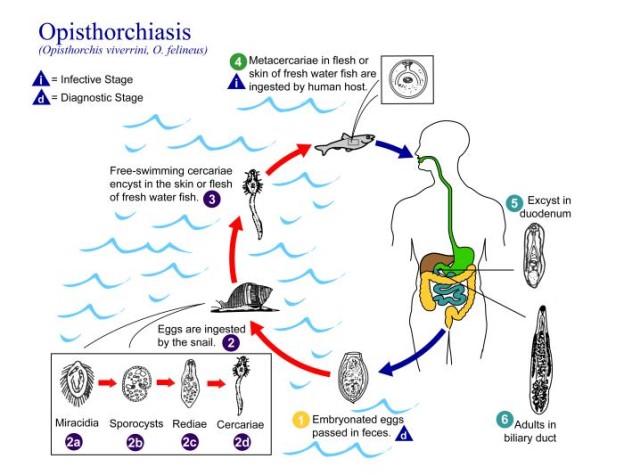Study: Eight out of 10 people in Saravane district, Laos infected with Opisthorchis, hookworm
A new study published today in the journal, Parasites and Vectors, took a look at helminthiasis problem in Southern Laos to try to understand helminth infection and associated risk factors in relation to existing local knowledge, attitudes and practices regarding worm infections in endemic communities.
In the study, researchers obtained two stool samples from 574 members, at least 2 years of age, from 10 randomly selected villages in Saravane district, Southern Laos.
The samples were examined using the Kato Katz method.
What did they find?
The prevalence of Opisthorchis viverrini, hookworm, Trichuris trichiura, Ascaris lumbricoides and Taenia sp. was 88.7%, 86.6%, 32.9%, 9.8% and 11.5%, respectively. Most individuals were co-infected with O. viverrini and hookworm.
Eating raw fish and the lack of adequate sanitation facilities such as latrines were the key factors in the high prevalence of these parasitic infections.
In Southeast Asia, about 67.3 million people are at risk for Opisthorchis viverrini, the most frequently observed Food Borne Trematodiasis. Ten million people are infected in Thailand and Laos. O. viverrini infection is common where consumption of raw or insufficiently cooked fish dishes is deeply rooted in local culture and where proper sanitation is minimal or absent. O. viverrini infection results in hepatobiliary morbidity and chronic infection may lead to cholangiocarcinoma, a fatal bile duct cancer .
Related Story: WHO: 56 million people suffer from a foodborne trematodiases
Saravane district is located on the Bolaven Plateau.
Eating raw or insufficiently cooked fish dishes was very common (79.7%). Only one in 13 villages had latrines. Sixty per cent of the cyprinoid fish species consumed in this district are infected with O. viverrini metacercariae.
The researchers conclude the study highlights a high helminth infection rate and poor community awareness of worm infections and associated risk factors.
Only a sound awareness of worm infection and the underlying risk factors may prevent infection and re-infection after treatment.
For more infectious disease news and information, visit and “like” the Infectious Disease News Facebook page

Opisthorchis Life Cycle
Image/CDC














